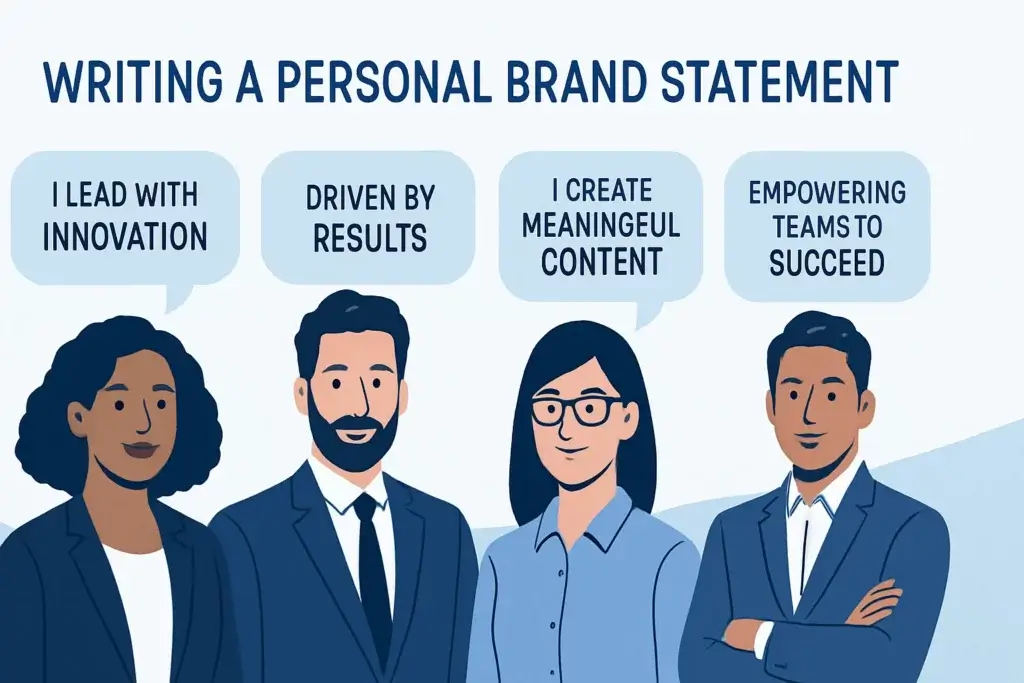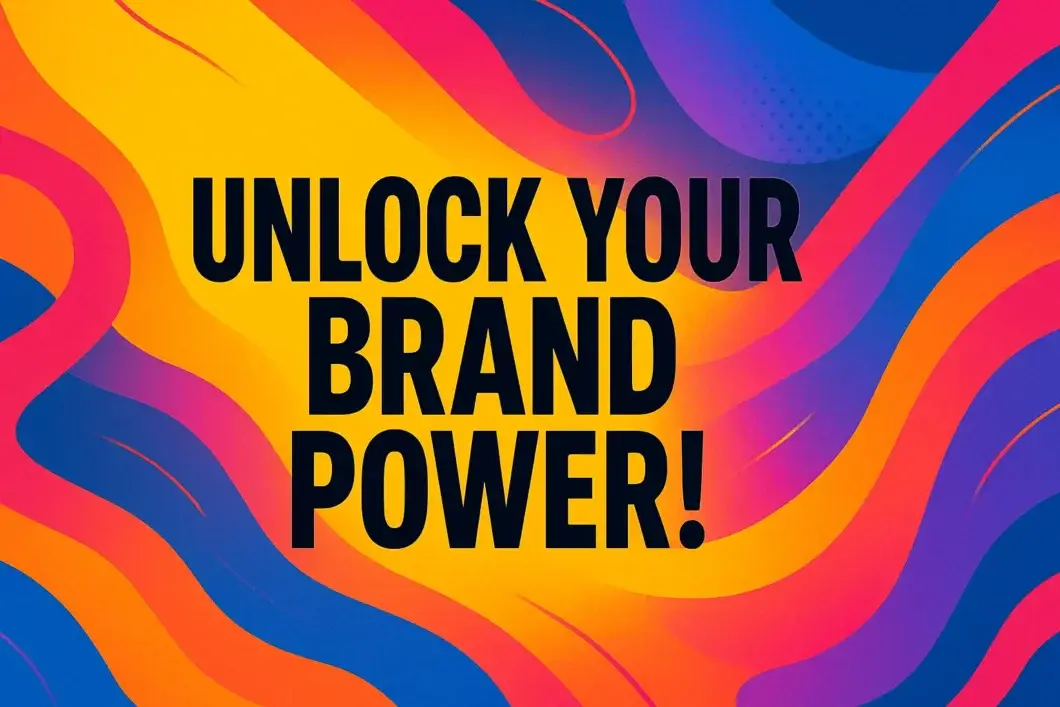A personal brand statement is your professional elevator pitch condensed into 1-3 sentences that capture who you are, what you do, and what makes you unique.
It’s the foundation of your personal brand and serves as your calling card across networking events, social media profiles, and professional platforms.
In today’s competitive marketplace, a compelling personal brand statement can be the difference between blending in and standing out.
Whether you’re a business owner, freelancer, or corporate professional, your brand statement helps you communicate your value proposition clearly and memorably.
What Makes a Great Personal Brand Statement
A powerful personal brand statement includes three essential components:
- Your expertise and specialization – What you’re known for
- Your target audience – Who you serve
- Your unique value proposition – What sets you apart from competitors
The best statements are conversational yet professional, avoiding technical jargon while remaining specific enough to be meaningful.
Step-by-Step Guide: How to Write a Personal Brand Statement

Step 1: Identify Your Core Expertise
Start by asking yourself these fundamental questions:
- What are you an expert in?
- What do you specialize in?
- What makes you different from competitors?
- What do clients consistently appreciate about working with you?
Pro tip: Consider surveying colleagues and clients for external perspectives. Their insights often reveal strengths you might overlook.
Step 2: Define Your Target Audience
Understanding your audience shapes every word of your statement. Consider:
- Potential employers – Focus on career accomplishments and technical skills
- Prospective clients – Emphasize the value you deliver and results you achieve
- Industry peers – Highlight your expertise and thought leadership
- Customers – Showcase your commitment to service and problem-solving abilities
Step 3: Craft Your Value Proposition
Examine your past experiences to identify consistent accomplishments, personality traits, and accolades.
Look for patterns in feedback you’ve received – these often reveal your unique strengths.
Step 4: Choose Your Format and Tone
Personal brand statements can take several formats:
| Format | Best For | Example |
|---|---|---|
| Direct Statement | Clear, professional positioning | “I help production facilities streamline their processes to minimize waste and boost profits” |
| Question Format | Established professionals | “Do you want to increase your conversion rates by 15%?” |
| Action-Oriented | Collaborative approach | “Let’s build great branding together” |
| Results-Focused | Quantifiable achievements | “My site designs increase traffic by at least 25%” |
Step 5: Write and Refine Multiple Drafts
Draft multiple versions using different approaches:
- Start with a comprehensive list of your attributes
- Create separate versions for different platforms or audiences
- Focus on being specific while maintaining broad appeal
- Remove unnecessary filler words to create concise, impactful statements.
Step 6: Test and Perfect Your Statement
Before finalizing your statement:
- Practice saying it aloud – does it flow naturally?
- Test it with family and friends – does it make sense out of context?
- Ensure every word earns its place – no room for ambiguity or repetition
- Avoid clichéd phrases like “passionate,” “results-driven,” or “detail-oriented”
Personal Brand Statement Examples by Industry
Consultants and Coaches
Business Consultant: “Being a business owner is challenging. It doesn’t have to be confusing. I’ll show you how.” – Terry Rice
Business Strategist: “Grow your premium business, double your pricing, and land more high-end clients.” – Quanisha Green
Digital Marketing Professionals
Marketing Expert: “Empowering ridiculously good marketing.” – Ann Handley
Social Media Specialist: “Helping you build and manage your social media presence across platforms. @socialeyes”
Content Creators and Educators
YouTube Coach: “Helping you build your influence with online video.” – Sean Cannell
Online Educator: “I can teach you how to properly utilize social media platforms to increase your brand’s reach and revenue”
Entrepreneurs
Tech Visionary: “As a serial entrepreneur with a passion for technology and innovation, I transform ideas into successful startups, driving growth through strategic vision and relentless execution”
Sustainable Business Leader: “Dedicated to building businesses that make a difference, I am an entrepreneur with a strong commitment to sustainability and social impact”
Common Mistakes to Avoid
1. Being Too Generic
Avoid overused phrases that could apply to anyone. Instead of “passionate and results-driven,” use specific descriptors like “Python-fluent developer” or “Treasury-qualified financial officer”.
2. Using Industry Jargon
Keep your language conversational and accessible to avoid alienating potential connections who may not understand technical terms.
3. Making It Too Long
Remember that attention spans are short. Your statement should be memorable and easy to digest in just a few seconds.
4. Focusing Only on What You Do
Don’t forget to include who you serve and what results you deliver. The most effective statements connect your expertise to client outcomes.
5. Neglecting Your Personality
While maintaining professionalism, let your authentic voice shine through. This helps create genuine connections with your audience.
Advanced Tips for Maximum Impact
Use the 4 Cs Framework
Structure your statement around the four pillars of personal branding:
- Clarity – Be specific about what you do
- Consistency – Align with your brand identity across platforms
- Credibility – Demonstrate your expertise and past results
- Competitiveness – Highlight what makes you different
Tailor for Different Platforms
Create variations of your statement for different contexts:
- LinkedIn headline – Professional and keyword-rich
- Twitter bio – Concise and personality-driven
- Website about page – More detailed and story-focused
- Networking events – Conversational and memorable
Include Quantifiable Results When Possible
Numbers add credibility and make your statement more compelling. Examples include:
- “Increase traffic by at least 25%”
- “Help businesses grow revenue by 40%”
- “Reduced operational costs by $2M annually”
Testing Your Personal Brand Statement
The Elevator Test
Can you deliver your statement naturally in a 30-second elevator ride? Practice until it feels conversational, not rehearsed.
The Clarity Test
Ask someone unfamiliar with your work to read your statement. Can they clearly understand what you do and who you help?
The Memorability Test
After hearing your statement once, can people remember the key points? If not, consider simplifying or adding a memorable element.
The Differentiation Test
Compare your statement to competitors. Does it clearly communicate what makes you unique? If it sounds like everyone else’s, refine further.
SEO Optimization for Your Personal Brand Statement
When using your statement online, consider these optimization strategies:
- Include relevant keywords naturally within your statement
- Use it consistently across all digital platforms
- Incorporate it in your meta descriptions for better search visibility
- Feature it prominently on your website’s homepage and about page
Frequently Asked Questions
How long should a personal brand statement be?
A personal brand statement should be 1-3 sentences or approximately 15-30 words. It needs to be concise enough to be memorable while comprehensive enough to convey your unique value.
Should I write in first person or third person?
Both approaches work effectively. First person (“I help…”) feels more conversational and personal, while third person sounds more formal and professional. Choose based on your industry and personal style.
How often should I update my personal brand statement?
Review your statement every 6-12 months or whenever you experience significant career changes, develop new expertise, or shift your target audience. Your statement should evolve with your professional growth.
Can I use the same statement everywhere?
While your core message should remain consistent, consider creating slight variations for different platforms and audiences. Your LinkedIn headline might be more keyword-focused, while your Twitter bio could be more personality-driven.
What if I serve multiple audiences?
If you have diverse target audiences, create separate versions of your statement for each group, or craft a broader statement that encompasses your various specializations while remaining specific enough to be meaningful.
Should I include my credentials or certifications?
Include credentials only if they’re highly relevant and add credibility to your positioning. For example, “CPA-certified financial advisor” or “Google-certified digital marketer” can strengthen your statement.
How do I make my statement memorable without being gimmicky?
Focus on genuine personality traits, specific results you deliver, or unique approaches you take. Avoid forced puns or overly clever wordplay that might detract from your professionalism.
A well-crafted personal brand statement is an investment in your professional future. It clarifies your positioning, attracts the right opportunities, and helps you communicate your value consistently across all professional interactions.
Take time to develop, test, and refine your statement – it’s one of the most important pieces of marketing copy you’ll ever write.
